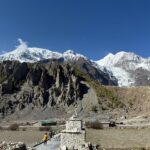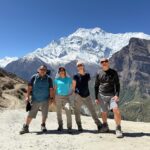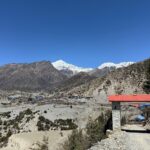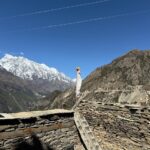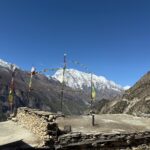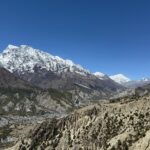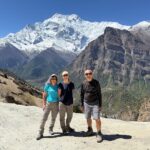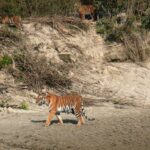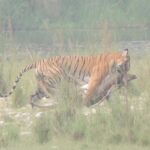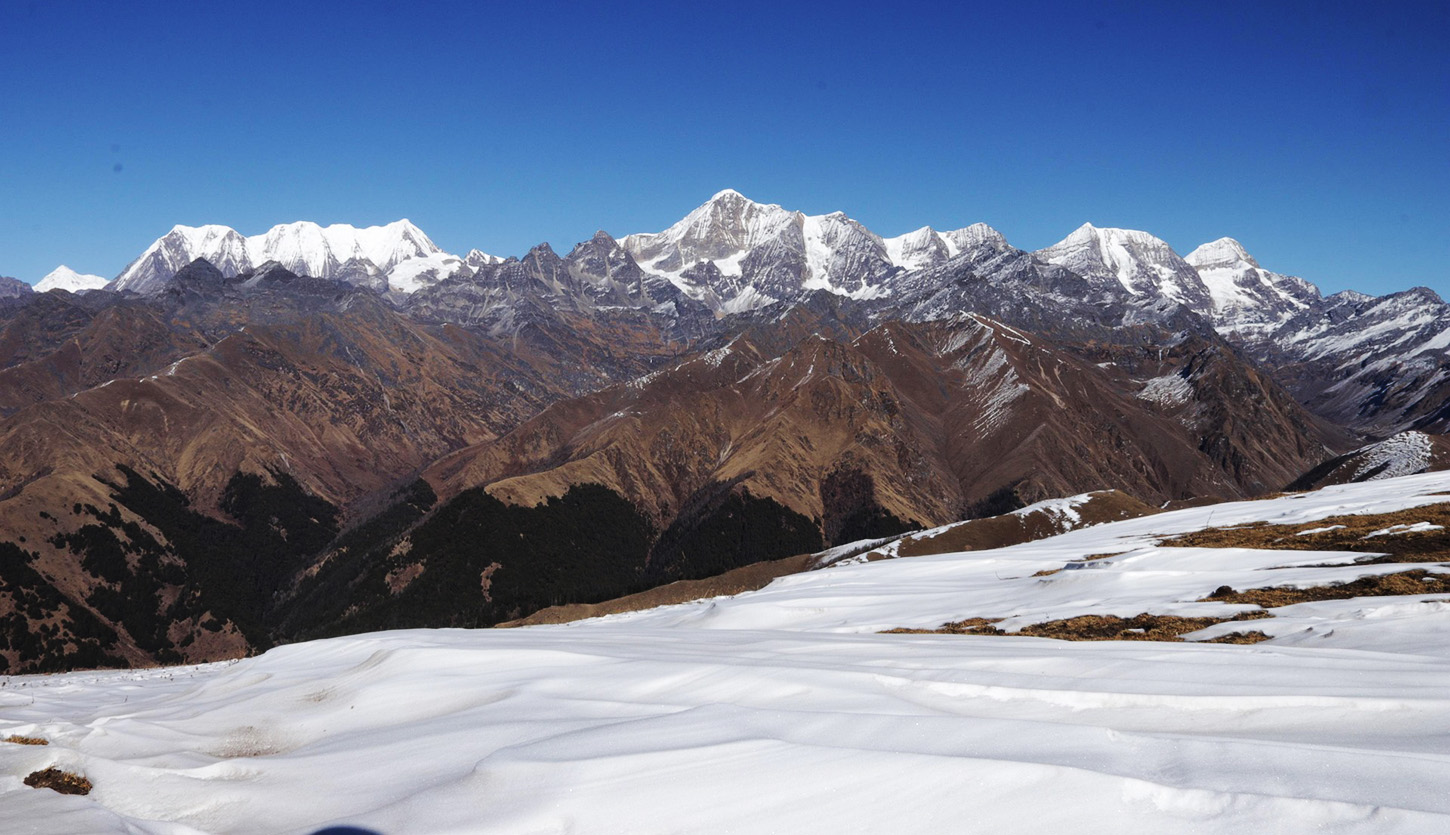
Journey Into the Hidden Himalayas – Upper Dolpo Trek
The Upper Dolpo Trek is a remote and demanding journey into the Hidden Himalayas that leads you to Nepal’s restricted area, featuring stunning scenery and an amazing Tibetan-influenced culture. It is run by Getaway Nepal Adventure and travels ancient trade routes through dry valleys, high mountain passes and peaceful villages unspoiled by recent eras. Shey Phoksundo Lake is one of the highlights of the trek, a beautiful turquoise gem framed by rugged cliffs. The trek also visits Shey Gompa, an ancient Buddhist monastery, and meets the unique traditions of the Dolpo-pa people. The trail takes you over several high passes at over 5,000m and demands good endurance. The Upper Dolpo Trek is a must-do for experienced trekkers who are craving a genuine experience in this rich region of the Himalayas, with its stunning landscapes and spiritual depth.
Table of Contents
-
- Best Time for Upper Dolpo Trek
- Special Permits Required for the Upper Dolpo Trek
- Difficulty Level of the Upper Dolpo Trek
- Physical Preparation & Training for the Upper Dolpo Trek
- Accommodation During the Upper Dolpo Trek
- Food and Dining Experience on the Upper Dolpo Trek
- Essential Packing List for the Upper Dolpo Trek
- Is the Upper Dolpo Trek Suitable for Senior Citizens?
- Importance of Travel Insurance for the Upper Dolpo Trek
Best Time for Upper Dolpo Trek
The spring (April-May) and autumn (September-November) are ideal periods to start the Upper Dolpo Trek. The weather is stable, the skies are clear and the mountain views phenomenal during these months. Spring brings verdant views, blooming rhododendrons and moderate temperatures, and autumn has the bonus of crispy air, gold-red campuses and ideal trekking conditions. The trails become muddy during monsoon (June-August), and it snows heavily in winter (December-February) making high passes impassable. Autumn the best season, owing to dry trails and comfortable temperatures that will make for a safer and more enjoyable trek in the remote Dolpo region.
Special Permits Required for the Upper Dolpo Trek
Trekking in Upper Dolpo requires special permits because it is a restricted area. Trekkers must obtain a Restricted Area Permit (RAP), which costs USD 500 per person for the first 10 days and USD 50 for each additional day. Additionally, a Shey Phoksundo National Park Permit, costing USD 30 per person, is also required. Independent trekking is not permitted; trekkers must go with a registered local trekking agency like Getaway Nepal Adventure, which handles all necessary permits and ensures a smooth and legal trekking experience.
Difficulty Level of the Upper Dolpo Trek
The Upper Dolpo Trek is among the most challenging treks in Nepal, demanding a high level of fitness, endurance, and trekking experience. The route includes several high passes over 5,000m, featuring steep ascents and descents, rough trails, and remote wilderness. The absence of modern facilities, extreme weather conditions, and long trekking days (6-8 hours daily) contribute to the trek’s difficulty. Altitude sickness is a major concern, making proper acclimatization essential. Getaway Nepal Adventure provides a well-paced itinerary to help trekkers adjust to the altitude. This trek is best suited for experienced trekkers who are physically and mentally ready for a demanding adventure. Those without prior high-altitude trekking experience should consider preparatory training before attempting this route.
Physical Preparation & Training for the Upper Dolpo Trek
Preparing for the Upper Dolpo Trek involves building cardiovascular endurance, strength, and acclimatization to high altitudes. Trekkers should regularly engage in activities like hiking, jogging, cycling, or stair climbing to boost their stamina. Incorporating strength training that targets the legs, core, and shoulders is essential for navigating rough terrain and carrying backpacks. It’s also helpful to practice hiking on uneven trails while carrying a loaded backpack to simulate actual trekking conditions. Given the risk of altitude sickness, spending time in high-altitude areas prior to the trek or participating in an acclimatization trek can be advantageous. Getaway Nepal Adventure suggests a training regimen of at least two months, which should include long hikes with elevation gains, resistance training, and breathing exercises. A trekker who is well-prepared will not only enjoy the journey more but also reduce the risk of exhaustion or injuries in the challenging terrain of Upper Dolpo.
Accommodation During the Upper Dolpo Trek
Accommodation in Upper Dolpo is quite basic and limited. Trekkers typically stay in teahouses or campsites along the route. Teahouses are simple lodges operated by local families, providing basic rooms with wooden beds, blankets, and shared bathrooms. In more remote areas, camping becomes necessary, which means bringing tents, sleeping bags, and kitchen supplies. Getaway Nepal Adventure organizes both teahouse stays and fully supported camping treks, ensuring comfort even in tough conditions. Electricity and internet access are rare, and heating is minimal. It’s important to pack a warm sleeping bag and extra power banks. Despite the basic amenities, the warmth of the locals and the breathtaking landscapes make the journey truly rewarding.
Food and Dining Experience on the Upper Dolpo Trek
Food options on the Upper Dolpo Trek are limited but nourishing. However, the foods served are nutritious. Teahouses offer traditional Nepali food, especially Dal Bhat (rice, lentils, and vegetables), Tibetan bread, soups, noodles and tea. Being so remote, fresh vegetables and fruits are in short supply, and most food is carried in on mules. Camping treks, which Getaway Nepal Adventure organizes, come with a dedicated cook and kitchen crew that make nutritious meals. It is important to remain hydrated, so trekkers would carry water purification tablets or water filters with them. You can also bring snacks (energy bars, nuts) and instant meals to complement the limited menu. And though the menu options are limited, there is nothing like the comfort of home-cooked meals in the high-altitude wilderness.
Essential Packing List for the Upper Dolpo Trek
Packing wisely for the Upper Dolpo Trek ensures a comfortable journey. Trekkers should carry:
Clothing: Thermal layers, down jacket, waterproof jacket, trekking pants, gloves, woolen hat, and UV-protection sunglasses.
Footwear: Sturdy, waterproof trekking boots with good ankle support and warm socks.
Camping Gear: If camping, include a 4-season sleeping bag, sleeping mat, and headlamp.
Essentials: Trekking poles, first-aid kit, sunscreen, lip balm, water purification tablets, and energy snacks.
Electronics: Power banks, solar charger, and extra batteries (electricity is scarce).
Personal Hygiene: Wet wipes, biodegradable soap, and toilet paper.
Getaway Nepal Adventure provides sleeping bags and tents for campers. Packing light but efficiently is crucial, as porters carry limited loads.
Is the Upper Dolpo Trek Suitable for Senior Citizens?
Senior citizens with good fitness levels and prior trekking experience can undertake the Upper Dolpo Trek. However, due to its high altitude, rough trails, and long walking hours, it’s not recommended for beginners. Proper acclimatization, medical check-ups, and physical training are necessary. Getaway Nepal Adventure ensures well-paced itineraries, allowing gradual altitude adjustment. Trekkers above 60 years should consider shorter treks in Lower Dolpo before attempting Upper Dolpo. A personal medical consultation, high-altitude insurance, and a flexible itinerary are essential for a safe experience.
Importance of Travel Insurance for the Upper Dolpo Trek
Travel insurance is required for Upper Dolpo due to its extreme remoteness and higher altitude. The insurance has to reimburse medical emergencies, helicopter evacuation, trip cancellations and high-altitude sickness. As there are virtually no medical facilities outside of Dunai, trekkers must be covered for emergency evacs over 5,000m; Getaway Nepal Adventure will ask trekkers to provide valid insurance ahead of the trek. Mental choice of provider coverage adventure sports and remote trekking evacuation guarantees travel without heavy consequences.

